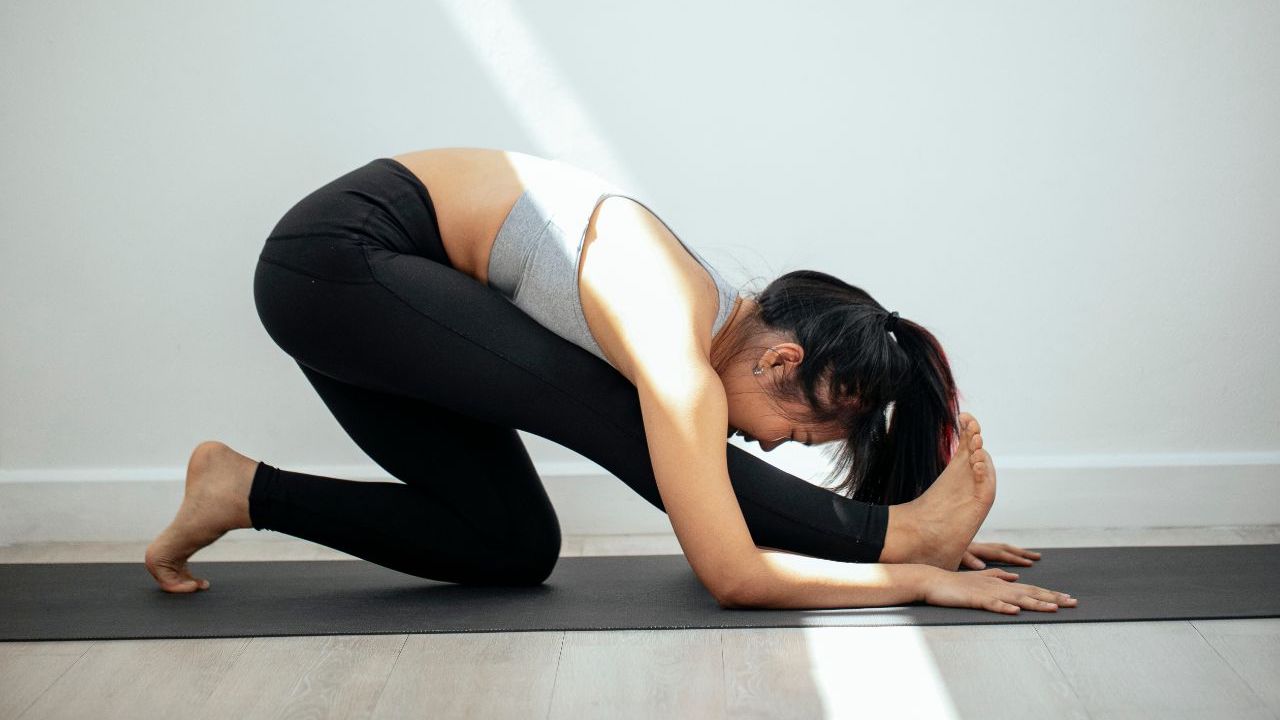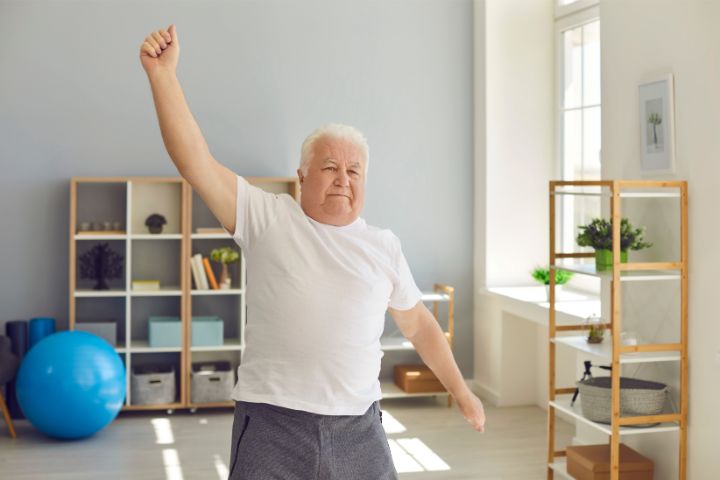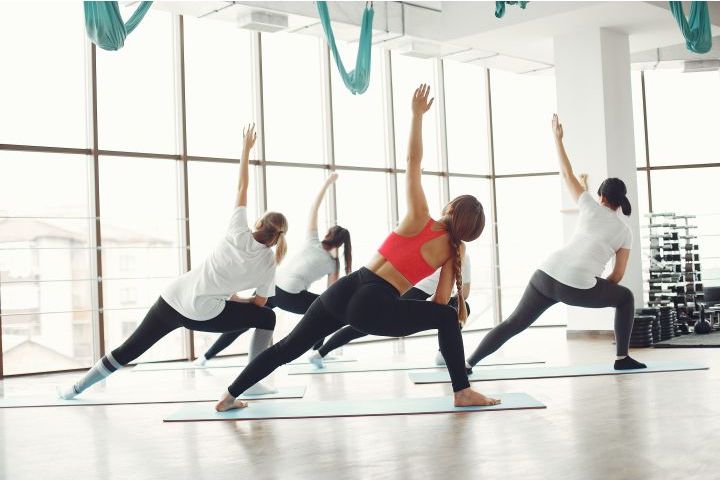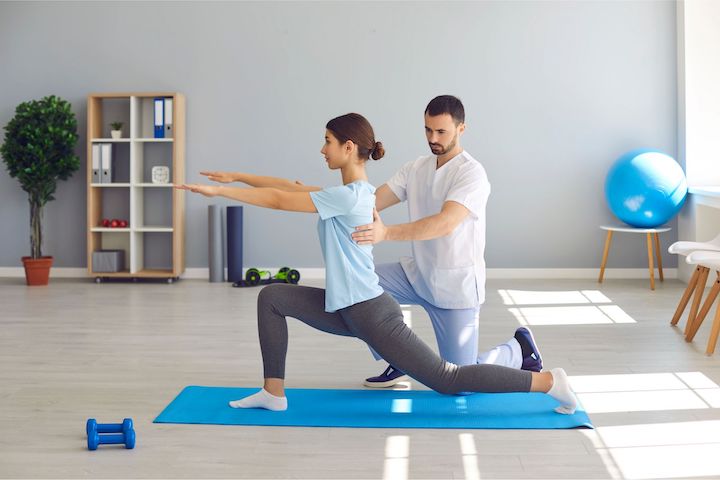

Physical therapy is a healthcare profession that helps individuals improve their overall physical and mental well-being. It’s an incredibly valuable resource for those looking to increase the range of motion in their limbs, reduce chronic pain, or regain strength from an injury.
Flexibility plays a major role in all aspects of physical therapy, so it’s important to understand why it’s so beneficial and how you can incorporate it into your daily routine. In this article, we’ll discuss the importance of flexibility in physical therapy and some tips on how you can improve your own flexibility.
We’ll also explore the role of physical therapists as well as self-care techniques to maintain a good flexible body. Finally, we’ll look at how nutrition affects flexibility and what you can do to ensure you’re getting all the essential nutrients needed for optimal performance.
By understanding the importance of flexibility in physical therapy and taking steps towards improving your own mobility, you’ll be able to maximize your body’s potential!
With physical therapy, you can unlock the hidden potential in your body and get back to living life to the fullest! A licensed physical therapist is a healthcare professional that helps patients restore their strength, improve movement, and increase flexibility.

This is done through evidence-based assessments and interventions that focus on posture alignment and muscle strengthening. Physical therapists are experts in analyzing how our body moves during everyday activities, as well as helping us understand how our environment affects our health.
Physical therapy also offers many different options for improving balance, alleviating pain, restoring mobility after an injury or surgery, and minimizing the risk of future injuries. With individualized treatments designed to meet your specific needs, physical therapy can help you reach your goals with improved strength and flexibility so that you can move with more ease.
Whether you’re trying to recover from an injury or looking to make long-term lifestyle changes, physical therapy is a valuable tool in achieving greater overall wellness. Those interested can see a complete guide to Physiotherapy in this separate blog post.
You may have heard of the benefits of flexibility, but do you know how it applies to physical therapy?
With an increased range of motion, reduced risk of injury, and improved physical performance, you can understand why flexibility is so important. Through stretching and range of motion exercises, physical therapists work to improve your overall mobility and help patients reach their goals safely.
These activities also help reduce pain and make movement easier while decreasing the chance of injury or re-injury.
Enhancing your range of motion is key to unlocking the full potential of your body and health, so let’s take a closer look.
Flexibility in physical therapy allows you to move more freely and with greater agility, giving you improved quality and increased endurance. This improved range of motion can help you carry out daily activities easier and with less pain or strain on the body.
Physical therapists use various techniques such as stretching, exercise, and massage to improve flexibility, which increases the range of motion. Through these techniques, the therapist can target specific areas that need more attention while also making overall improvements for a flexible body.
With a greater range of motion comes better posture and coordination, leading to an overall healthier lifestyle. Additionally, having an increased range of motion makes it easier for physical therapists to diagnose any issues that might be affecting movement patterns or causing pain.
This means that whatever condition is being treated will have a better chance of improving quickly due to the targeted focus on areas requiring extra care.
By improving your range of motion, you’re also reducing your risk of injury and allowing yourself to move more safely. Proactive prevention is essential for keeping your body functioning optimally, and increased physical flexibility can help reduce the risk of serious injuries like muscle tears or joint pain.
With improved flexibility, you can:
By stretching regularly to increase flexibility, you’re taking proactive steps toward injury prevention and creating a healthier lifestyle for yourself in the long run. Not only will this decrease your risk for potential injury, but it may even help boost your performance in whatever physical activities you participate in—from running to yoga to dancing!
Stretching helps ensure that all parts of our bodies are able to work together fluidly without risking any kind of strain or damage that could be caused by tension buildup or restricted movement patterns due to tight muscles or lack of mobility.
With increased physical flexibility comes improved physical performance, allowing you to move more smoothly and powerfully. It helps keep your muscles and joints in proper alignment, which can improve your posture and help protect against injury.
 Photo Credit: Studio Roman
Photo Credit: Studio Roman
Improving flexibility through physical therapy also increases the range of motion in your joints. This can improve the performance of everyday activities such as walking, climbing stairs, lifting items, or even playing sports.
Physical therapy exercises are designed to target specific parts of the body with an emphasis on building strength and improving range of motion. Specific exercises focus on lengthening tight muscles while strengthening weak ones, helping to restore the balance between opposing muscle groups.
With a balanced body comes improved coordination, agility, power, and speed – all key components for better overall physical performance.
Let’s discuss the four different types of flexibility:
Whether you realize it or not, static exercises can have a lasting effect on your body and well-being.
Static stretching techniques involve holding a position for around 30 seconds, allowing the muscle to relax and lengthen over time. This type of exercise is beneficial for improving flexibility and range of motion, as it increases circulation and reduces tension in the muscles.
In addition, static stretching requires mental focus in order to fully engage the muscles and ensure that the stretch is being performed correctly. With this focus comes improved concentration, which can help relieve stress and reduce anxiety levels.
The combination of physical relaxation with mental clarity makes static stretching an ideal method for improving flexibility while also providing physical and psychological benefits.
Dynamic stretching exercises are like a dance, as each movement flows gracefully from one to the next, helping the body to reach its full potential. By using progressive stretching and dynamic strengthening techniques, physical therapists can help their patients become more flexible while also addressing any muscular imbalances they may have.

By focusing on these movements, physical therapists can create a comprehensive plan that not only builds strength but also promotes proper techniques for safer and more effective exercise. Through dynamic stretching exercises, patients can improve the range of motion in their joints and reduce stiffness in their muscles.
Dynamic stretches also help increase coordination and balance which are essential for overall health and fitness. Furthermore, performing dynamic stretches regularly helps improve posture which is important for maintaining an active lifestyle.
By encouraging their patients to incorporate dynamic stretching into their daily routine, physical therapists can ensure that they remain flexible long-term.
Now, let’s take a look at the ballistic approach to physical therapy.
Ballistic exercises involve quick, jerky movements that require rapid muscle stretching and contracting. These aggressive movements have been used for years in rehabilitation to improve range of motion, agility, and coordination.
They are designed to strengthen the muscles and increase proprioceptive and neuromuscular awareness. Ballistic exercises can be very beneficial when performed correctly, but they must be done with caution because of the increased risk of injury due to their rapid nature.
It’s important for physical therapists to emphasize proper form in order for patients to get the most out of these exercises while avoiding potential harm. Flexibility is an essential component in ballistic training as it allows patients to perform each exercise with ease and minimal stress on their bodies.
Getting your body moving is key to a successful rehabilitation program, and active exercises are a great way to do that.
Active physical therapy techniques involve stretching techniques and muscle tensioning as a means of strengthening muscles and restoring range of motion. These exercises can be tailored to fit individual needs and abilities, helping to ensure that you’re working at the optimal level.
Active physical therapy also includes activities such as walking, biking, swimming, or jogging, which help build strength throughout the entire body. These activities can also improve balance, coordination and posture, and boost overall energy levels.
Furthermore, each activity helps to increase blood flow throughout the body, which aids in healing injured tissues faster. By exercising regularly during your physical therapy plan, you’ll not only see better results but also have more flexibility in your joints.
You’ll want to stretch your muscles and get the blood flowing with some of these exercises, like a breath of fresh air for your body. Flexibility exercises are an important part of any physical therapy regime, as they help to increase the range of motion, improve balance, and reduce the risk of injury.
To help you start on your flexibility journey, try some slow stretching techniques that focus on breathing deeply and gently pushing the muscles beyond their comfort zones. Warm-up exercises such as light jogging or walking can be great for getting the body ready for more intense stretching.
Incorporate dynamic stretches into your routine – this means moving while you stretch by using controlled bouncing or swinging motions. Doing this will help prevent injuries during physical activity as well as increase performance.
Focusing on stretching your muscles regularly can really make all the difference in improving flexibility and helping you reach your goals!
The role of physical therapists is vital in helping individuals reach their health and fitness goals. They provide expert guidance on how to increase the range of motion, improve balance, and prevent injury.
Physical therapists understand the importance of flexibility for optimal physical performance and use preventive care methods such as stretching exercises and medication management to help individuals achieve better health outcomes.
Physical therapists can create individualized programs tailored to a person’s needs. They work with patients to develop strength, coordination, mobility, posture, and endurance. By utilizing flexibility training techniques regularly with a physical therapist’s guidance, patients can make significant progress towards achieving their desired level of fitness and improved overall health.
Additionally, physical therapists offer support by providing education on strategies for maintaining healthy lifestyle habits that will lead to long-term benefits.
Now that you understand the role of physical therapists in facilitating flexibility, it’s important to understand how proper form plays a key role.

You may have heard the phrase ‘form follows function’ before; this is especially true when it comes to physical therapy. A proper form allows your muscles to activate correctly and your posture to remain aligned during exercises, which are both critical components of a successful physical therapy program.
Having an experienced physical therapist observe your movements during exercise can help identify any incorrect postures or muscle activation issues that could be hindering progress.
They’ll be able to provide guidance on how to adjust your movements so that you’re getting the most out of every exercise.
Not only will this help prevent injury by avoiding unnecessary strain, but it’ll also maximize the effectiveness of each activity and ensure that you’re achieving maximum flexibility gains from each session.
Gaining the expertise of a physical therapist can be an incredibly beneficial experience, with results that are out of this world! Working with a PT helps to equip you with the skills and knowledge to approach your physical health properly, incorporating pain management and injury prevention techniques.
You’ll learn how to target problem areas while avoiding those where you don’t need help. With their tailored plan for you, physical therapists can assess your needs and progress over time. Plus, they provide support and guidance throughout the entire process – from initial assessment to completing your program.
This way, you have someone who’s knowledgeable about your condition always helping you reach your goals in a safe manner. Physical therapy isn’t only about healing injuries but also about maintaining an overall healthy lifestyle through flexibility training.
Taking care of yourself is essential and with a physical therapist, you can get the best self-care techniques to help you stay healthy and strong!
Breathing techniques and stretching exercises are two powerful tools that your physical therapist will teach you. The breathing techniques can centre your body so that you can reduce stress and tension in your muscles. This allows for efficient movement during exercise or everyday activities.

Stretching exercises are also beneficial as they help increase flexibility, range of motion, posture, circulation, and balance. With regular practice of these self-care techniques, you’ll be able to maximize the results from your physical therapy sessions as well as maintain good health between appointments.
When it comes to physical therapy and recovery from injury or illness, self-care is one of the most important things you can do for yourself. Your physical therapist will provide individualized instruction on how to properly perform breathing exercises and stretching routines to ensure maximum benefit while avoiding further injury or strain.
As your journey progresses with physical therapy, it’s important to continue practising these self-care techniques so that you can live an active lifestyle free from pain or discomfort due to existing conditions.
Improving your flexibility is key to helping you move freely and comfortably, so it’s important to take the time to find ways to do this.
Stretching techniques like yoga and pilates are great tools for increasing your overall flexibility, but they should only be done after you’ve warmed up your muscles by doing low-impact cardio activity.
It’s also important to focus on proper form while performing these exercises; avoid using momentum or bouncing, as this can lead to injury.
Additionally, don’t forget the importance of mental focus while stretching — taking a few deep breaths before each session will help relax your body and allow for a greater range of motion.
With consistency over time, you’ll begin to notice an increase in your flexibility that will help you move more easily and confidently.
Eating well plays an essential role in developing and sustaining good flexibility, so don’t forget to fuel your body properly. Incorporating healthy eating habits into your daily routine can help you become more flexible over time.
Here are some ways that nutrition can help:
By making sure you eat well, you’re giving yourself the best chance possible to achieve greater flexibility!
You can easily fit flexibility exercises into your daily routine!
Through dynamic stretching and mental focus, you can unlock a whole new realm of possibility. Allow yourself to feel the freedom of movement while gaining an improved range of motion.
By incorporating flexibility exercises into your day-to-day life, you’ll be serving others through increased mobility and overall well-being. Even small efforts can make a big impact in someone’s life – so take some time to stretch each day and reap the benefits!
Choosing the right type of flexibility exercises for your age and physical condition is essential for getting the most benefit from your routine.
It’s important to start with an assessment of your body awareness and range of motion, so you can determine which activities are best suited for your needs.
From there, look into stretching movements that will enhance your mobility and help you reach new levels of performance while ensuring that you stay within a comfortable range of movement.
With the right understanding and practice, you can develop a flexible routine that’s beneficial to both mind and body.
You may have heard the phrase ‘no pain, no gain’, but when it comes to stretching, this idiom isn’t always true.
While stretching can be beneficial for improving posture and preventing injuries, there are some stretches you should avoid.
Certain exercises may put too much strain on your muscles or joints, leading to discomfort or even injury if done incorrectly.
To make sure you get the most out of your physical therapy routine without putting yourself at risk, be mindful of how far you stretch and talk to your therapist about any stretches that might not be right for you.
You can measure your progress in flexibility by tracking the time you spend stretching safely, the range of motion of your joints, and the strength of your muscles.
Start small and gradually increase the difficulty or duration of each stretch as you become more comfortable. Using a mirror to observe how your body moves can be a great way to identify areas that need improvement.
Additionally, there are various apps available that allow you to track your progress over time and compare it with data from other people who have similar goals.
Stretching regularly will help ensure steady progress towards increased flexibility.
You’re ready to see results from your flexibility exercises, but how long will it take?
The answer depends on the type of exercise you’re doing and how often. Generally speaking, restorative stretching can help prevent overuse injuries and lead to an improved range of motion in about four weeks.
For example, if you start a routine that includes 10 minutes of stretching every day after physical activity, you could notice an increase in your flexibility within a month or two.
Remember to be patient with yourself; progress takes time and consistency is key!
You’ve seen the importance of flexibility in physical therapy, and now it’s time to go out and put what you’ve learned into practice.
Flexibility exercises, working with a physical therapist, self-care techniques, and nutrition all play an important role in increasing your flexibility.
By taking the time to incorporate these elements into your daily routine, you’ll be able to enjoy improved mobility and reduce pain.
Explore the truth of this theory: the more flexible you are, the easier it is to stay active and healthy.
So take control of your health today—you won’t regret it!
There are no results matching your search.
Reset